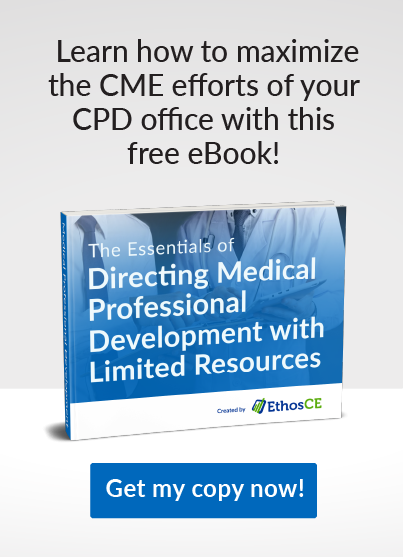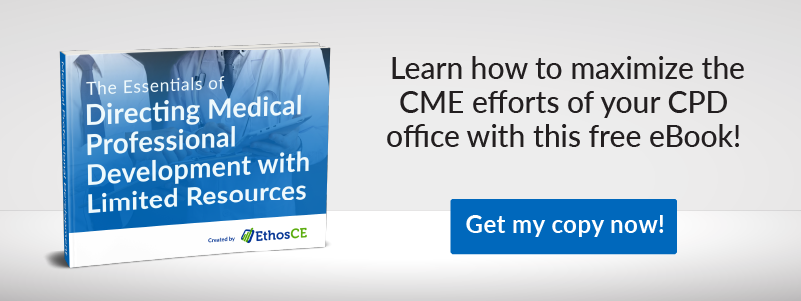5 Ways to Improve Medical Continuing Education Courses
Are your medical professionals happy with your CME courses?
Do you have low completions or negative feedback on any course?
Are you also dealing with limited resources, so you end up multitasking and spreading yourself thin?
There are five ways you can improve your medical continuing education courses, as well as a professional service that can help.
1. Know Your Learners’ Needs through Their Learning Styles
Different people have different learning styles, and your learners are no exception. For example, 65% of people are visual learners, according to a study from the Social Science Research Network, so more course providers have incorporated video and interactive content into their online continuing education courses. In yet another study, Fleming and Mills reported that when medical student learning styles were classified as visual, auditory, or kinesthetic, 73% preferred one learning style, 22% preferred two in equal amounts, and the remaining students preferred all three. These figures were broken down further:
- 33% visual
- 26% auditory
- 14% kinesthetic
- 4% auditory and kinesthetic
- 5% all three styles
You can address these various styles within your continuing education courses by tailoring your learners’ overall experience.
2. Tailor Learners’ CME Experience
You should diversify activity content to keep your learners engaged. Consider multiple-choice questions, essays, rich media, interactive content, and other such elements.
Identify which activities are dropped quickly, and rank these by how little time is spent before learners abandon the course altogether. Adjust your activities to address these issues.
Use interactive videos
Video increases information retention and lets you present difficult medical concepts that standard text can’t provide. You can add videos to YouTube, upload your own, or use Flash learning content to a full-featured LMS like EthosCE. When you incorporate video, animation, and/or webinars, you can provide educational programming that works for every learning style.
Use discussion groups
Using discussion boards lets your learners develop their own online community. They can discuss your medical continuing education courses and exchange learning materials and ideas. After viewing podcasts or webinars, discussions can promote additional learning.
Bring in social media
Studies show that 31% of clinicians use social media for professional networking. Use Facebook, LinkedIn, and Twitter to your advantage. You can post webinar and tutorial details, as well as new course announcements and even reading lists. Your information should be available 24/7 from any device.
3. Keep It Simple
You’ve invested serious time into creating your continuing education courses so they’re ready for your learners. You’ve announced them on social media, medical journals, emails, and medical websites. The last thing you want is to lose learners before they even take your courses. Therefore, make it as simple as possible for them to enroll.
Why not give them a sneak peek of your content through the easy-to-use interface that EthosCE provides? Offer a free trial period so they can have a realistic glimpse of your course catalog or a sample mini course that gives them the motivation to buy. After their preview has ended, provide a link so your learner can sign up for their chosen course. Provide an intuitive experience that enables them to add to a “shopping cart” to check out.
4. Provide Courses That Address Accreditation Education Requirements
As medical professionals, your learners must earn, renew, and keep their certifications and licensing on a regular basis. Your goal is to address their accreditation requirements, as well as increase the value of their education and keep them returning for new courses. As such, your medical continuing education courses must be ACCME accredited. You need to be innovation-ready to transform your educational content into an experience that not only engages but also inspires your learners as per the Criterion 35 mandate.
In a joint effort, the ACCME and the AMA adopted the proposal to simplify and align their expectations for CME programs for the AMA PRA Category 1 Credit™ that allows you to deliver new technologies and formats like adaptive e-learning social media, simulations, and virtual realities. Your learners will benefit from having courses that go beyond the traditional lectures and textbooks.
When it comes to your Criterion 23 compliance, you can help multiple-healthcare professionals earn their IPCE credits without the need to obtain separate accreditation for each profession.
You can also provide courses that fulfill learners’ MOC 2 requirements through self-assessment exams that lead to free MOC points.
5. Use a Professional Full-Service Concierge from EthosCE
As you’re creating your medical continuing education courses, there’s always something that can draw your attention away from doing your best work. Whether it’s staff turnovers or budgetary issues (or both), you could use extra help.
The EthosCE professional concierge service is a highly skilled service that can provide assistance with office tasks much more quickly and efficiently.
This service brings in expert and highly experienced LMS administrators and eliminates repetitive tasks like data entry, managing emails, and user registrations, setting up courses, sending reports, pulling data, and creating and updating forms.
This EthosCE service addresses issues surrounding your office’s limited resources. You can focus on developing critical CME content while you receive project management and data-entry resources.
EthosCE also removes the headaches involved in hiring and rehiring staff or using students or temp staff. Services can be done for less than the cost of a full-time employee and performed remotely or on a retainer basis, so it saves time and money.
EthosCE Can Improve Your Continuing Education Courses
At EthosCE, we understand the challenges when you’re creating and implementing medical continuing education courses. Our professional concierge service steps in when you need extra help and lets you concentrate on what you do best for your learners.
EthosCE supports tightly resourced medical CPD offices by providing professional services they use to set up courses, send reports, pull data, provide supplemental training and more. At EthosCE, we believe a lack of internal resources shouldn’t get in the way of delivering quality CME.
Want to further improve your medical continuing education courses? Contact us for a free demo to learn more!
 We're now part of the Cadmium product suite! Learn more
We're now part of the Cadmium product suite! Learn more 


